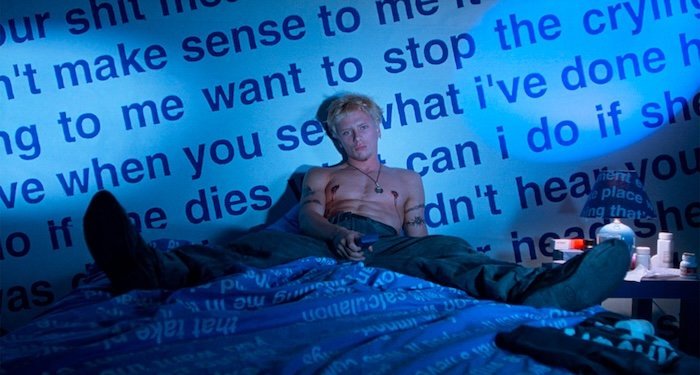
Gautam Valluri
-
Posts
222 -
Joined
-
Last visited
Posts posted by Gautam Valluri
-
-
1 minute ago, Luis Hartmann said:
Yeah, in my circles it's quite common for people to use the Ultra Primes with the 416. Good results.
As far as I know, the 416 was designed to be able to take 35mm lenses.
-
3 hours ago, Stephen Perera said:
My guess is he will employ Creig Fraser who shot Star Wars Rogue One on celluloid conforming to the traditional look of Star Wars
Stephen, Rogue One was shot on the Arri Alexa 65.
-
Skyfall was the only Bond film shot digitally (by Deakins). I believe Van Hoytema shot some Spectre sequences on the Arri Alexa (the one-take opening sequence). No Time To Die AFAIK was purely film, knowing Sandgren's preferences.
I think the last Villeneuve film shot on film was Prisoners. And taking into account that Amazon is a digital streaming platform, it looks highly unlikely that it will be shot on film.
In any case, the filming format is not important. Villeneuve and Amazon are not the right forces to be making a next-generation Bond. The Craig-era was already too self-serious and joyless. Villeneuve's male protagonists are too soft-spoken, low-energy and passive. I fear that this version of Bond will be geared towards young adults, where cool gadgets and action sequences become front and center, and a villain who's nothing more than a living sculpture in a ridiculously high-ceiling environment.
My favourite Bond films have all been directed by non-auteur/ workmen directors getting things done, much like Bond does himself. People forget that Bond is an employee doing his job. I would've gone with a director like Kenneth Branagh or Edward Berger (the Conclave guy). They have an non-obtrusive, invisible style of directing. With Branagh, he might even play the villain or M so even better.
-
2 hours ago, Uli Meyer said:
No, the process remains ECN2.
Is it still ECN2 if the remjet removal step is skipped?
21 hours ago, Dirk DeJonghe said:ECN2 uses CD3 developing agent, C41 uses CD4, you would get an image but it would be off colour.
No wonder the Cinestill images were always a little "off" on their colours.
-
@Aapo Lettinen do you happen to have any example stills of what the "ghost reflections" look like on these chrome pressure-plates when shot without the remjet layer?
-
Looks like bleach bypass on the new negatives will be tricky nigh pointless. Interesting that Spielberg & Kaminski are testing these stocks on their new film. Kaminski always does bleach bypass on the negs right?
-
I got hold a copy of this document from Kodak for anyone interested.
-
Any other issues to be expected from the removal of the remjet layer?
For example, there have been many discussions here about how some chrome-plated pressure plates in some Aatons and Arriflex cameras have presented issues with B&W Double-X film. Will this be an issue with this proposed non-remjet colour stocks?
-
5 hours ago, Kevin Staub said:
Hello everyone
I am looking for good lab and scanning services in Europe.
Has anyone experience working with https://www.helsinkifilmandgear.fi/ or http://www.cinelab.film/ ?
Thanks for letting me know if they are good and viable places to get film developed and scanned.Where in Europe? There are great labs everywhere.
I personally recommend Dejonghe (Kortrijk, Belgium) and Andec Cinegrell (Berlin).
There is also a vast network of artist-run film labs where you can develop your own film: www.filmlabs.org
-
 1
1
-
 1
1
-
-
As with every year, IndieWire covers the cameras and lenses used in the films features at this year's Cannes film festival:
https://www.indiewire.com/gallery/cannes-2025-cinematography-cameras-arri-alexa-35/amrum/
Linklater and his DP apparently used an Arri 2C to film the 35mm sections of Nouvelle Vague. The film also features the Cameflex, the one that Jean Painlevé loaned to Godard to shoot Breathless. Although its used only as a prop in Linklater's film.
Back in 2018-19, I used to work in Film Restoration at the Panlevé archives and there was his Cameflex stored in the downstairs storage area. My boss claimed that it was the one that was used on Breathless. There was no way to verify that claim though.
-
12 hours ago, Giray Izcan said:
Good to know. I thought they did for Euphoria. Good luck
As far as I know, they cross-processed the Ektachrome in ECN2.
-
 1
1
-
-
Here's a list of technicians on the FIlmlabs.org website. No one specifically does CLA for K3s but it might be worth checking with them:
https://www.filmlabs.org/technical-section/providers/where-to-have-film-cameras-repaired/
-
 1
1
-
-
All of Joerg's recommendations are legit.
You can find the whole list on the Filmlabs.org website:
https://www.filmlabs.org/technical-section/providers/leader/
-
 1
1
-
-
55 minutes ago, Florian Noever said:
Especially in wide shots, 7203 is far behind 5219 in terms of resolution.
Yeah I generally am not a big fan of S16 for wide shots. I think its the same reason Caesar Charlone used 3-perf 35mm for establishing shots in City of God and The Constant Gardener. Nice to see a a proper visual comparison now.
-
6 minutes ago, Florian Noever said:
I can not say, because I haven't shot any tests on 7207...
My mistake! I meant to write 7203, the 50D Vision3 stock.
-
On 5/5/2025 at 10:49 PM, Florian Noever said:
It took me longer than expected, but I finally managed to set up the page to view the resolution test and download all the test images. Please let me know if anything doesn’t work, what you think of the test, and feel free to share your thoughts or start a discussion on the topic.
This is a very interesting study. I didn't think there would be so much of a difference between the 7219 and 7213.
Also, would you say that the 7207 is close enough to the 5219 (3-perf)?
-
Bump. Anyone?
-
I'm considering filming 7222 on an Arri SR3 and was concerned about the light streaks caused by the chrome pressure plate of the camera due to the lack of a remjet layer on the stock.
I've read several discussions on these forums over the years, warning people of this but I couldn't find any examples of what the light streak/ halo actually looks like.
Anybody has any example stills or links to scans, or even examples from finished films that I could look at? To see how bad it actually is?
Also, which of the Arri SR or S16 Aaton models have a non-chrome pressure plate?
Thanks in advance of for your help,
-
On 4/27/2025 at 12:34 AM, Dennis Toeppen said:
For calibration purposes, I'll share that the highest offer I have at this point is nearly twice the high end of your appraisal.
Then you should sell it to this person before they find out they're overpaying.
-
 2
2
-
-
2 hours ago, Ralph Poes said:

This looks to me like undiffused tungsten light (probaby 800W-1000W) on the left (slightly back) of the subjet, probably shaped with a flag. Then a second (probably 500W) light, probably filtered through doubled-up blue gels, coming from the front right of the subject.
2 hours ago, Ralph Poes said:This looks like three frontal spots, either colour-dialled or cool white with blue gels on them? They also look very soft, so maybe heavy diffusion? These could also be fresnels? Sorry I'm not so sure about this one. The lamp on the nightstand is a practical, probably fitted with a 150W-250W photoflood bulb.
Your advantage is that you're shooting on an old digital camcorder, so test, test, test. Shoot a lot of tests and see what you can get. There's nothing like experimenting live and seeing the results. You might find something about your camera that is very unique- so do a LOT of tests. On digital, it costs nothing, so might as well.
-
I believe he used to light with a Lowel Tota kit. Here is an old article that breaksdown his costs and approach to the making of his film The Living End:
https://www.peterbroderick.com/writing/writing/abcsofnobudgetfilmmaking.html
Basically try and shoot with old tungsten lights like the Tota or the Omni, using colour correction gels, diffuseurs, barn doors etc. If you're filming on an old digital camcorder, the 2/3 CCD sensor might actually come closer to emulating the gritty 16mm images of Araki's first films, but you have to take care to protect your highlights.
I would get some old tungsten lights, they're probably pretty cheap to get on ebay and do lots of tests with the camcorder, and keep experimenting. Unlike film, you don't have development costs so no reason not to do hours and hours of test footage.
-
Congratulations Jarin for the Oscar nomination!
-
 2
2
-
-
On 12/24/2024 at 12:28 AM, Ben Brahem Ziryab said:
The Iwerks 8/70mm does not shoot sync sound.
However there's a sync sound 8-perf 35mm VistaVision camera out there called the Wilcam W11. It was used on two high-profile movies that are coming out next year.
I'm guessing The Brutalist and PTA's The Battle of Baktan Cross?
-
Wasn't there the Iwerks 8/70mm camera back in the day? Did it shoot sync sound?



Retirement Camera Gear Sale!
in Cine Marketplace
Posted
Congratulations on a fantastic career Gregory! Wishing you the best for your next chapter!